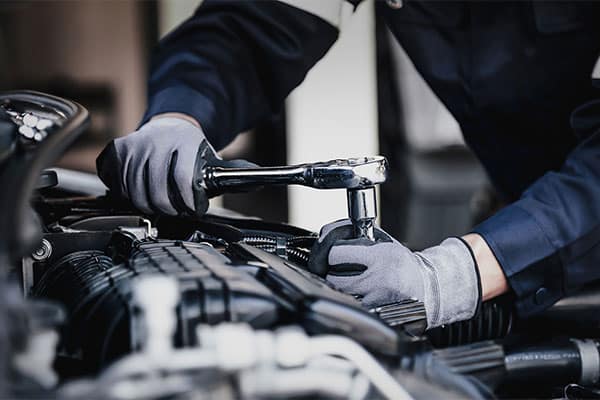All Categories
Featured
Proper tire upkeep is essential to expanding the life of your automobile and guaranteeing a smooth and risk-free driving experience. 2 of one of the most crucial tire services are tire rotation and placement. These services not only prevent early tire wear but also boost handling, fuel performance, and overall safety. If you're not familiar with what tire turning and positioning entail, below's a thorough consider why they matter and exactly how they benefit your vehicle.
What Is Tire Turning? Tire turning refers to moving your tires from one placement to one more to guarantee they wear uniformly. The factor tire turning is essential is due to the fact that not all tires put on the exact same means. In front-wheel-drive lorries, for instance, the front tires manage both guiding and power, that makes them use out faster than the rear tires. Likewise, the back tires put on differently in rear-wheel-drive and all-wheel-drive automobiles.
By revolving your tires routinely, you can balance out the wear throughout all 4 tires. This helps them last longer and enables even more also grip, enhancing handling and security. The majority of makers recommend rotating your tires every 6,000 to 8,000 miles or based on the vehicle's guidebook.
What Is Tire Positioning? Tire positioning, also recognized as wheel positioning, describes the process of adjusting the angles of your automobile's wheels to satisfy the supplier's specs. The goal of alignment is to make certain that all 4 tires are directing in the right instructions and at the right angles, which enables optimum handling, security, and tire life.
There are three primary positioning angles that are readjusted throughout a positioning check:

Camber: The tilt of the wheels when checked out from the front. If the camber is off, it can cause unequal tire wear, as the tire will not make complete contact with the roadway surface. Caster: The angle of the steering axis when checked out from the side. Correct wheel placement makes certain that your car is secure when driving straight which your wheel returns to its typical placement after a turn. Toe: The angle at which the tires direct inward or outside when seen from above. Incorrect toe positioning can trigger the tires to drag, resulting in uneven wear and minimized fuel performance. Imbalance can take place gradually as a result of typical driving or from striking barriers like aesthetics or pockets. If your positioning is off, it is necessary to get it checked and remedied to stay clear of problems down the roadway.
Why Tire Rotation and Alignment Matter. Boosted Tire Life:. Routine tire rotation makes sure even tire wear, helping you get one of the most gas mileage out of your tires. Unequal wear can cause you to replace tires prematurely, which can be pricey. When your tires wear equally, they last longer, conserving you money in the long-term.
Improved Vehicle Handling:. Proper alignment keeps your car driving straight and steady, especially at higher rates. Imbalance can trigger your automobile to draw away, making it more difficult to guide. By keeping your tires aligned, you ensure your car takes care of extra efficiently and naturally.
Enhanced Safety And Security:. Tires that are not rotated or aligned effectively can use unevenly, influencing how well your car quits and edges. Misaligned tires or tires with unequal wear patterns may trigger lowered grip, especially in wet or icy problems, leading to a higher risk of accidents.
Better Fuel Performance:. Tires that are misaligned can produce rolling resistance, suggesting your engine has to work harder to move the cars and truck. This raises fuel usage and decreases your cars and truck's fuel effectiveness. Appropriate tire placement minimizes rolling resistance, which can enhance gas mileage.
Indications Your Tires Need Rotation or Alignment. While it's important to stay on top of routine tire turnings and placements, there are a few indications that might indicate your tires require attention:
Uneven Use: If you observe that one tire is much more worn than the others, it's most likely time for a rotation. Guiding Pull: If your auto pulls to one side or feels off-center, maybe an indicator of imbalance. Resonances: If you feel vibrations in the steering wheel or the cars and truck, maybe because of a placement problem. Noisy Tires: Squealing or loud tires can indicate incorrect turning or misalignment. If you observe any of these indicators, it is very important to obtain your tires checked by a specialist.
Just How Usually Should You Turn and Straighten Your Tires? Tire rotation ought to generally be done every 6,000 to 8,000 miles, though this can vary based upon your driving problems and the kind of automobile you drive. It's likewise a good concept to have your tires rotated whenever you get an oil adjustment.
For placement, you ought to have your tires straightened every 1-2 years, or much more often if you discover any type of issues with taking care of or irregular tire wear. If you hit a big pothole or curb, it's smart to get an alignment inspect right away.
Final Thought: Normal Maintenance for Ideal Performance. Tire rotation and placement are two easy yet crucial solutions that keep your automobile running efficiently, successfully, and securely. By revolving your tires routinely and maintaining your wheels appropriately lined up, you can expand the life of your tires, enhance handling, and take pleasure in better fuel efficiency.
Latest Posts
Why Pick Vinyl Secure Fencing for Your Home?
How to Keep Your Floors for Lasting Charm?
A Taste of New York at Lucky Street